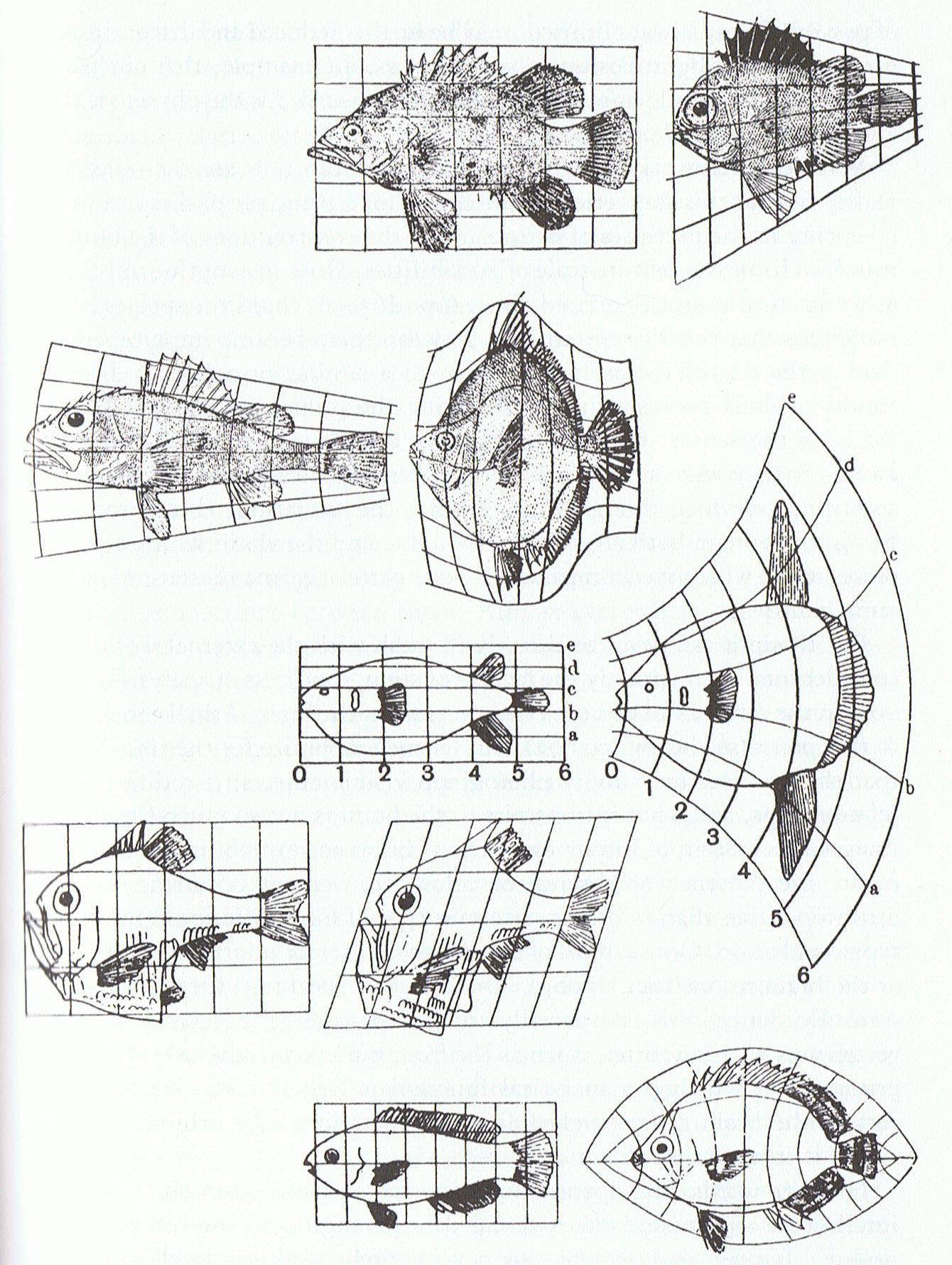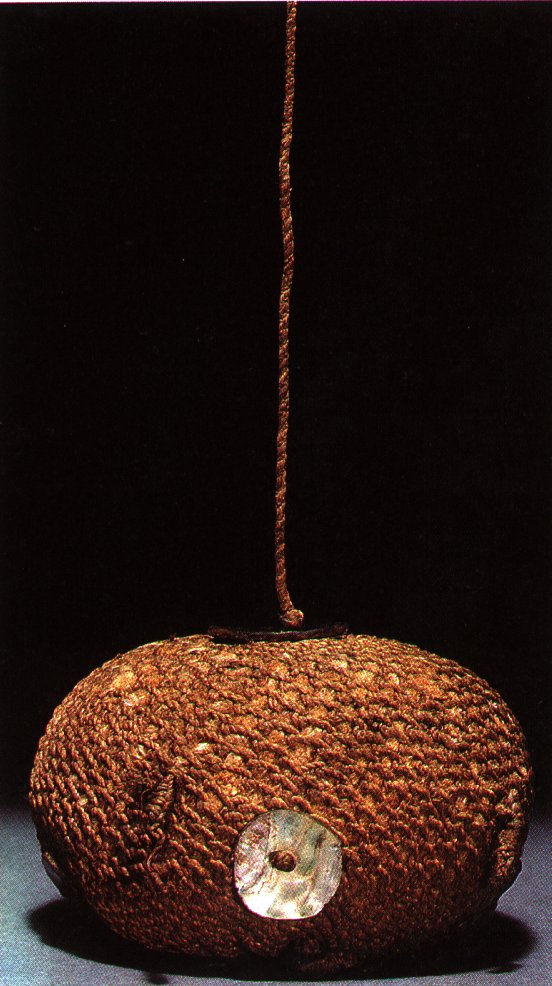|
TRANSLATIONS
...
Several animals
who had been
sent on ahead
failed in this
mission: one of
them was the
Winter Robin,
who succeeded in
entering the
Wind's house,
but forgot what
he was there for
as he warmed
himself in front
of the fire,
which burnt him
and gave him red
spots ...
The red spots we
now - after
having updated
ourselves with
earlier
information and
reflections -
can connect with
tao:
|
Tao
1.
To
cook
in
an
oven,
to
sacrifice.
P
Mgv.,
Mq.,
Ta.:
tao,
to
cook
in
an
oven.
2.
To
carry
away.
3.
Abscess,
bubo,
scrofula,
boil,
gangrene,
ulcer,
inflammation,
sore.
Mgv.:
taotaovere,
small
red
spots
showing
the
approach
of
death.
Mq.:
toopuku,
toopuu,
boil,
wart,
tumor.
Ta.:
taapu,
taapuu,
scrofula
on
neck
and
chin.
4.
Mgv.:
a
lance,
spear.
Ta.:
tao,
id.
Sa.:
tao,
id.
Ma.:
tao,
id.
5.
Mgv.:
taotaoama,
a
fish.
Sa.:
taotaoama,
id.
6.
Ta.:
taoa,
property,
possessions.
Ma.:
taonga,
property,
treasure.
Churchill.
Sa.:
tao,
to
bake;
taofono,
taona'i,
to
bake
food
the
day
before
it
is
used;
tau,
the
leaves
used
to
cover
an
oven.
To.:
tao,
to
cook
food
in a
oven,
to
bake.
Fu.:
taņ,
to
put
in
an
oven,
to
cook.
Niuē:
tao,
to
bake.
Uvea:
tao,
to
cook,
to
bake.
Ma.,
Rapanui:
tao,
to
bake
or
cook
in a
native
oven,
properly
to
steam,
to
boil
with
steam.
Ta.:
tao,
the
rocks
and
leaves
with
which
a
pig
is
covered
when
cooking;
baked,
boiled,
cooked.
Mq.,
Mgv.,
Mg.,
Tongareva:
tao,
to
bake
in
an
oven
...
The
word
refers
to
the
specific
manner
of
cookery
which
involves
the
pit
oven.
The
suggestion
in
the
Maori,
therefore,
does
not
mean
a
different
method;
it
is
but
an
attempt
more
precisely
to
describe
the
kitchen
method,
a
very
tasty
cookery,
be
it
said.
The
suggestion
of
boiling
is
found
only
in
Tahiti,
yet
in
his
dictionary
Bishop
Jaussen
does
not
record
it
under
the
word
bouillir;
boiling
was
little
known
to
the
Polynesians
before
the
European
introduction
of
pottery
and
other
fire-resisting
utensils
...
Churchll
2. |
|
...
The
Kayapo
had
myths
explaining
the
origin
of
the
earth
oven,
but
unfortunately
only
fragments
of
them
are
extant.
They
are
linked
to
the
cycle
of
the
dioscuri,
the
founders
of
the
men's
houses
and
the
initiators
of
hunting
rites
...
According
to
one
version
...
one
of
the
heroes,
although
the
myth
does
not
specify
which,
asks
for
a
round
manioc
loaf
to
be
made,
clasps
it
in
his
arms
and
orders
a
fire
to
be
lit
all
around
him.
Before
the
fire
dies
down,
the
Indian
has
changed
into
a
stone,
on
to
which
the
women
pour
water
to
prevent
it
from
cracking.
But
the
loaf
has
had
time
to
cook,
and
the
man
resumes
his
natural
appearance.
However,
his
skin
has
changed
from
white
to
red,
and
it
is
since
then
that
stones
have
been
used
to
heat
the
oven
... |
The myths are
reflecting each
other, thereby
making things
more and more
clear. Pictures
contain so much
information that
the linear slow
process of
transmission by
language needs
time and effort.
... The Sardine
... came back
with his eyes
closer to his
snout than to
his gills ...
I wonder if fish
in general
really have
their eyes close
to their gills.
Every little
piece of
knowledge is
potentially
important for
understanding
the whole. In
The Naked Man
there is a
picture from the
famous D'Arcy
Wentworth
Thompson which
clarifies
matters:

Flat-fish are
extreme.
We have arrived
here, at
transformations
of fish, by a
way of a long
detour. It
originated at my
idea that the
picture in GD78
(hura)
basically was a
variant of the
picture in GD21
(hua poporo):
 |
 |
|
hura
(GD78) |
hua
poporo
(GD21) |
In hua poporo
we can imagine a
kind of cosmic
tree with
droplets hanging
down. In hura
there is no such
tree and the
'berries' are
not droplets,
but probably
symbols for the
sun (presumably
at 4 cardinal
points). The
balls for
dancing (poi)
are not the same
as droplets.
|

"Poi
ball,
made
from
plaited
flax
fibre
ornamented
with
haliotis
shell
and
stuffed
with
bullrush
down.
It
was
swung
rythmically
around
the
body
and
tapped
for
percussive
effect
to
the
accompaniment
of
chant."
(Starzecka) |
In Gb2-16 the 4
balls at left
maybe allude to
hura,
while those
drooping at
right maybe
allude to hua
poporo.
Hura and
hua are not
the same, but
they sound
similar and must
therefore also
be similar in
other respects:
 |
 |
 |
 |
(4+4) + (4+3)
= 8
+ 7
= 15 |
|
Gb2-9 |
Gb2-10 |
Gb2-11 |
Gb2-12 |
 |
 |
 |
 |
(3+3)
+
(1+3)
= 6
+ 4
= 10 |
|
Gb2-13 |
Gb2-14 |
Gb2-15 |
Gb2-16 |
 |
 |
15
(moon)
+ 10
(sun)
= 25
= 5
* 5 |
7+12
= 19 |
|
Gb2-17 |
Gb2-18 |
The drooping
balls at right
in Gb2-16 are
not drops, they
are circular.
They must be
added to the 4
at left. The
twig of the
fallen ball
possibly
should be added
to the 4
feathers at left
to reach a
wished for 5.
If in Gb2-16
there are no
droplets (only
an allusion at
right), then
what we see in
Gb2-16 maybe does not
include the
watery half of
the year,
only those 18 (as
in Gb2-18)
decades of the
days of summer.
Next page in the
glyph
dictionary:
|
We
are
now
ready
to
investigate
why
hua
poporo
is
located
in
the
middle
of
the
summer,
according
to
the
calendars
in G
and
K:
Sun
has
its
midsummer
turning
around
point
(we
remember)
located
between
period
9
and
10:
| G |
period no. |
number of glyphs |
|
1, 2, 3 |
8 + 4 + 7 = 19 |
35 |
19 |
|
4, 5, 6 |
3 + 2 + 3 = 8 |
27 |
|
7, 8, 9 |
4 + 2 + 2 = 8 |
35 |
|
10, 11, 12 |
2 + 3 + 2 = 7 |
35 |
42 |
|
13, 14, 15 |
4 + 3 + 5 = 12 |
54 |
|
16, 17, 18 |
3 + 6 + 7 = 16 |
70 |
| K |
period no. |
number of glyphs |
| 1, 2, 3 |
7 + 3 + 4 = 14 |
28 |
14 |
| 4, 5, 6 |
3 + 2 + 3 = 8 |
22 |
| 7, 8, 9 |
2 + 2 + 2 = 6 |
28 |
| 10, 11, 12 |
2 + 3 + 2 = 7 |
*28 |
35 |
| 13, 14, 15 |
3 + 2 + 3 = 8 |
43 |
| 16 |
*13 |
*56 |
The
question
now
raised
is
crucial.
Hua
poporo
- up
to
now
-
has
appeared
to
be
connected
with
the
arrival
of
the
'wet'
season
and
with
autumn
equinox,
or
with
the
arrival
of
new
year
at
winter
solstice.
Why
should
there
be
'black
drops'
as
if
from
tears
at
midsummer?
Answers
will
be
given
following
this
hyperlink. |
|




















